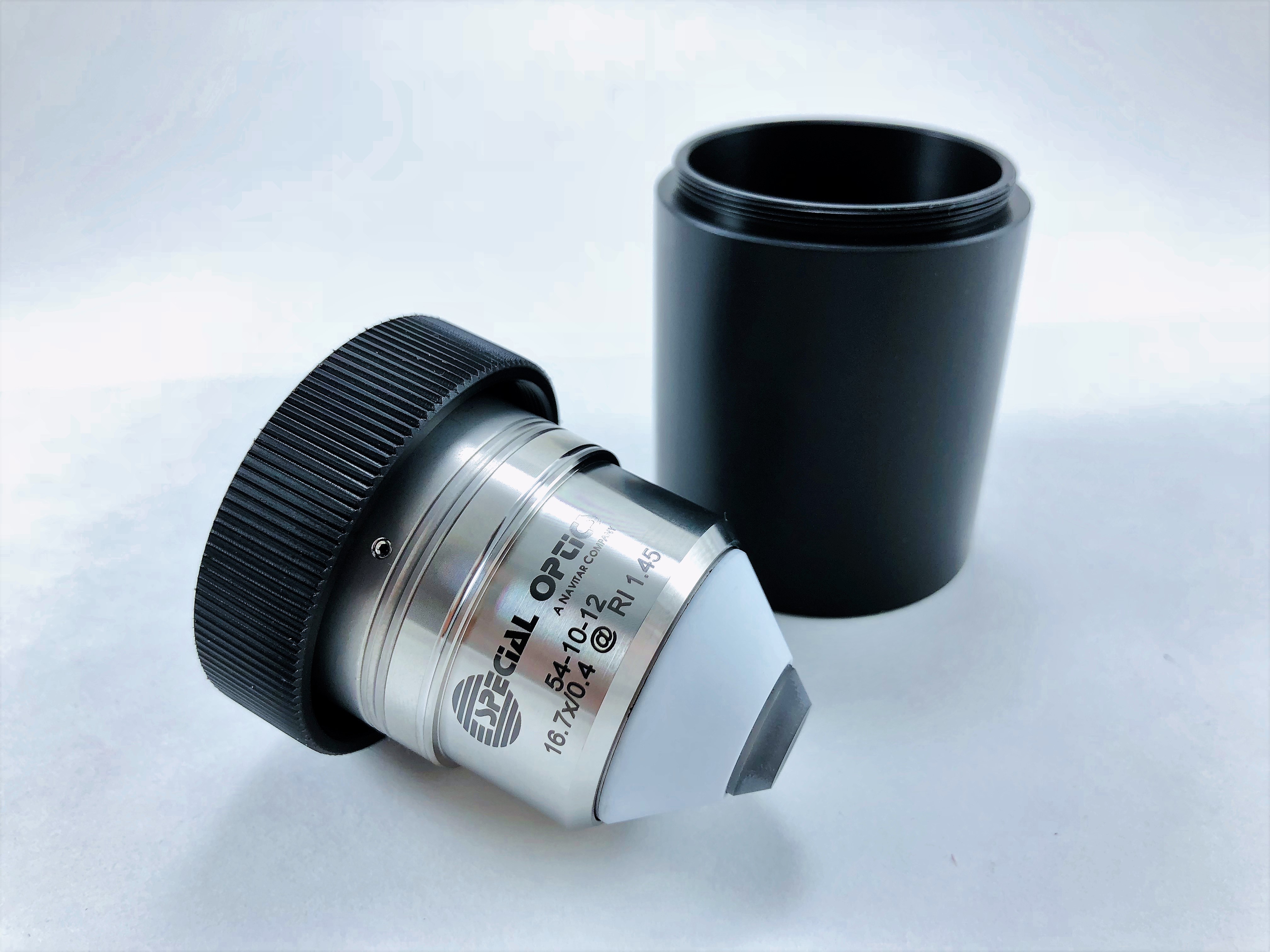Increasing Compatibility with Clearing Reagents
Special Optics, a design and manufacture company specializing in precision optical assemblies, in conjunction with Applied Scientific Instruments (ASI), has developed and applied a more robust chemically resistant sealant to their 0.4 N.A. immersion objective lens for cleared tissue applications, now enabling its routine use with organic solvents.
Since its initial prototype release to ASI in February 2017, Special Optics enhanced the chemically resistant sealant and updated the immersion objective to include a fixed non-metallic cover. The cover is robust in handling and cleaning, is nonwetting, exhibits zero porosity, and won’t deform.
With the sealant enhancement, the objective can safely be immersed in a wide range of media including ethyl cinnamate, TDE, mineral oil, silicone oil, and other proprietary organic media as well as FocusClear, Scale, and other aqueous-based solutions. Initial testing shows the objective is also compatible with DBE (used in DISCO protocols), but further tests are required to confirm complete resistance.
The lens offers 1.2 mm field of view, numerical aperture of 0.4, 16.7X magnification (with 200 mm tube lens), and 12 mm working distance. It is a dipping objective for media refractive index between 1.33 and 1.56, a very large range which includes all major clearing solutions. When used in multi-view systems like the diSPIM, the Special Optics objective lens offers sub-micron resolution in X, Y, and Z. The lens is available for separate purchase, unlike most other objectives suitable for cleared tissue.

Craig Fitzgerald, Vice President of Business Development for Special Optics, comments, “The testing efforts and support from ASI and their research partners in the neuroscience research/light sheet microscopy community, made this breakthrough design possible.”
